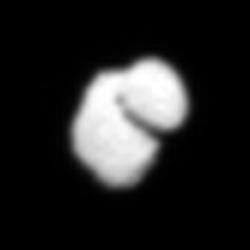
Public Stargazing
- Where:
- Frosty Drew Observatory
- When:
- Friday July 25, 2014 at 6:00 p.m.
- Cost:
- $1 Suggested Donation per Person
Tonight's forecast is looking awesome! We can expect clear skies most of the night with a chance of patchy fog during pre-dawn (4:00 a.m. - sunrise). Additionally, the New Moon will rise at 5:31 a.m., ten minutes before sunrise, leaving us spectacular views of the ravishing starscape over Charlestown, Rhode Island. Tonight is the night to be out at Frosty Drew as we can expect brilliant views of the Milky Way galaxy stretching over Ninigret Park, with the occasional shooting star. We plan to open the Sky Theatre and Nature Center at 6:00 p.m. with live viewing of the Sun and any sunspots visible today. Frosty Drew Naturalists will be in the Nature Center until 9:00 p.m. showcasing the brighter side of Frosty Drew. Once the Sun sets, we will point the Observatory telescopes to the night sky. The primary telescope will offer stunning views of Saturn's rings until near 11:00 p.m., switching over to deep sky objects as midnight approaches. Courtyard telescopes will be available, showcasing the many amazing celestial objects visible at Frosty Drew, including star clusters, nebulae, and galaxies. If skies stay clear we will finish off the night with early morning views of Venus rising in the East.
Make this night your night to become acquainted with the amazing universe we are part of.
-------------------------------------------------------------------------
Weekly Happenings
Scott MacNeill
Overnight Monday into Tuesday this week, the 2014 Delta Aquarid meteor shower will peak. The Delta Aquarid shower is the first notable meteor shower after the early summer lull in scheduled meteor showers. Possibly originating from a debris field left behind by Comet 96P/Machholz, the Delta Aquarids can produce upwards of 20 meteors per hour during the peak period. Though better suited for Southern Hemisphere sky watchers, the super thin 10% crescent Moon; which sets way before any meteor activity becomes available, will increase our chances of spotting meteors in the North. Set out after midnight, setup a reclining lawn chair or blanket and lay down with your feet facing the East. Look to the sky about 45° up from the eastern horizon. The shower lasts until sunrise so take your time and enjoy a comfortable summer night under the stars. If you happen to catch a photo of any Delta Aquarid meteors, be sure to post it on the Frosty Drew Facebook and we will share it on our timeline. Happy meteor hunting!
On 2 March 2004, the European Space Agency (ESA) Rosetta Mission left Earth, commencing its ten year adventure across the solar system. Its destination, a rendezvous with Comet 67P/Churyumov-Gerasimenko. Its mission, to complete the most detailed study of a comet ever attempted. Well skip ahead almost ten and a half years and the Rosetta spacecraft is closing in on Comet 67P.
Rosetta, which is now 12 days away from its arrival with the comet, awoke from a 2.5 year deep space hibernation on January 20, 2014. After a full systems check, Rosetta began tracking Comet 67P and successfully performed final rendezvous maneuvers with the comet in May. When Rosetta arrives at Comet 67P, orbit will be acquired and a detailed survey of the comet's surface will begin. The survey's goal is to find a suitable location to deploy the Philae lander, which will land on the comet's surface in November 2014. After deployment of the lander module, Rosetta and Philae will study changes happening to the comet as it travels towards, around, and away from the Sun. The mission ends in December 2015 when Comet 67P, Rosetta, and Philae head back out towards the orbit of Jupiter.
Comets are essentially time capsules on a solar system scale. The chemical compositions they contain have remained largely unchanged since their formation with the early Solar System. This offers us an opportunity to study the Solar System in its infancy, more than 4.6 billion years ago. The information they carry, tell us about our origins and allow us to reconstruct the history of the Solar System.
A steady stream of images from Rosetta have been arriving here in Earth. Each image shows additional details and higher resolution of Comet 67P, with a few surprises becoming apparent. Check out the ESA Rosetta media page to see the progress of the mission in pictures. Then keep a close eye on this ground breaking moment in history when we land on a comet and follow it around the Sun.
-Scott


